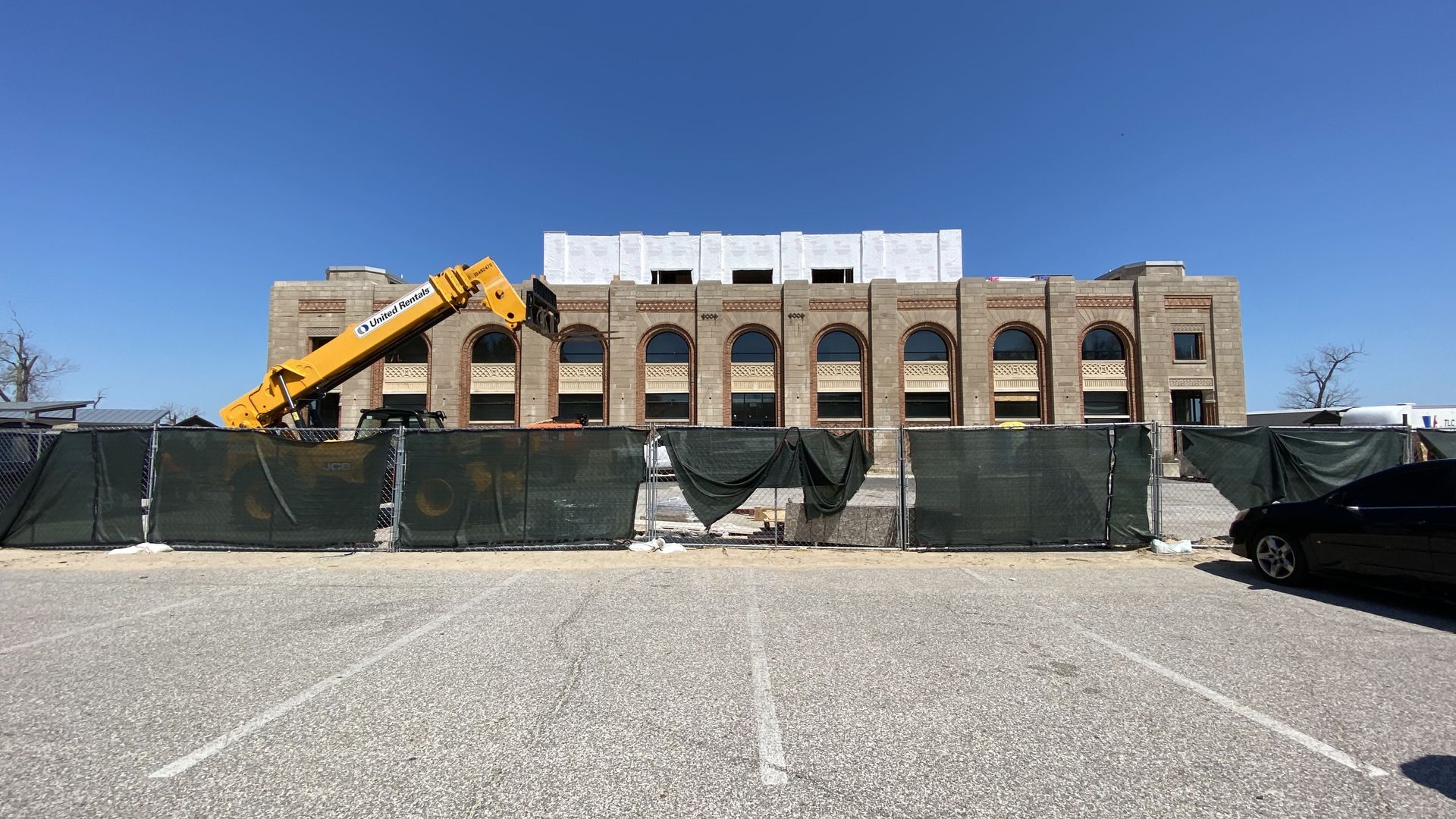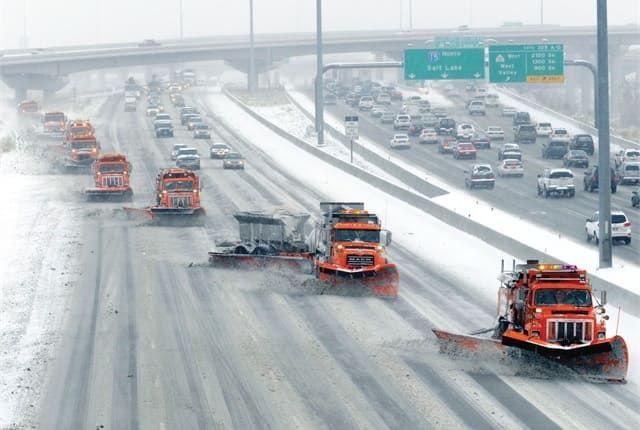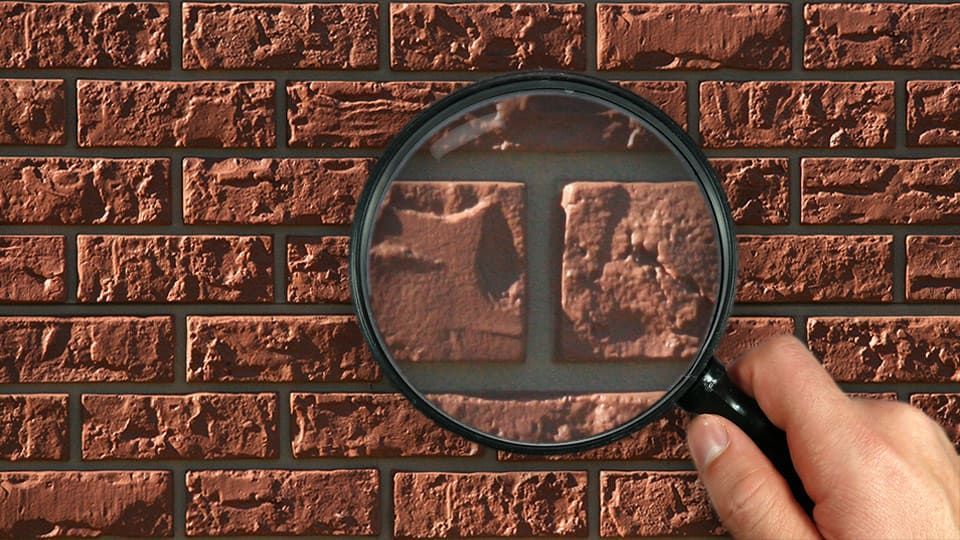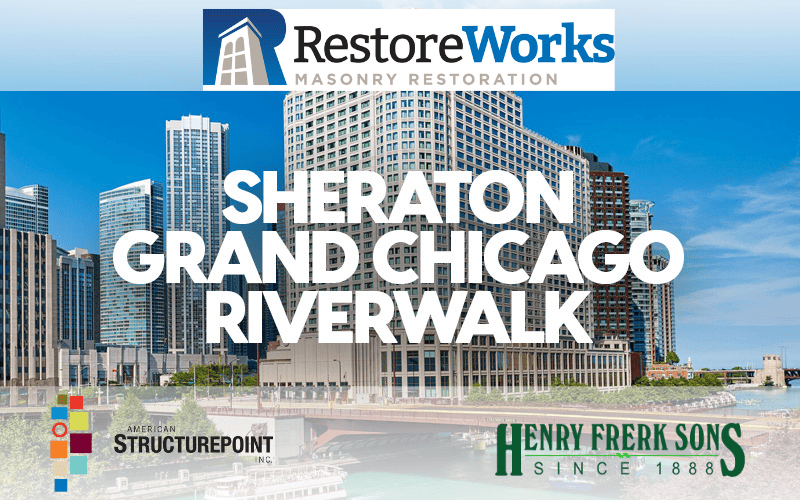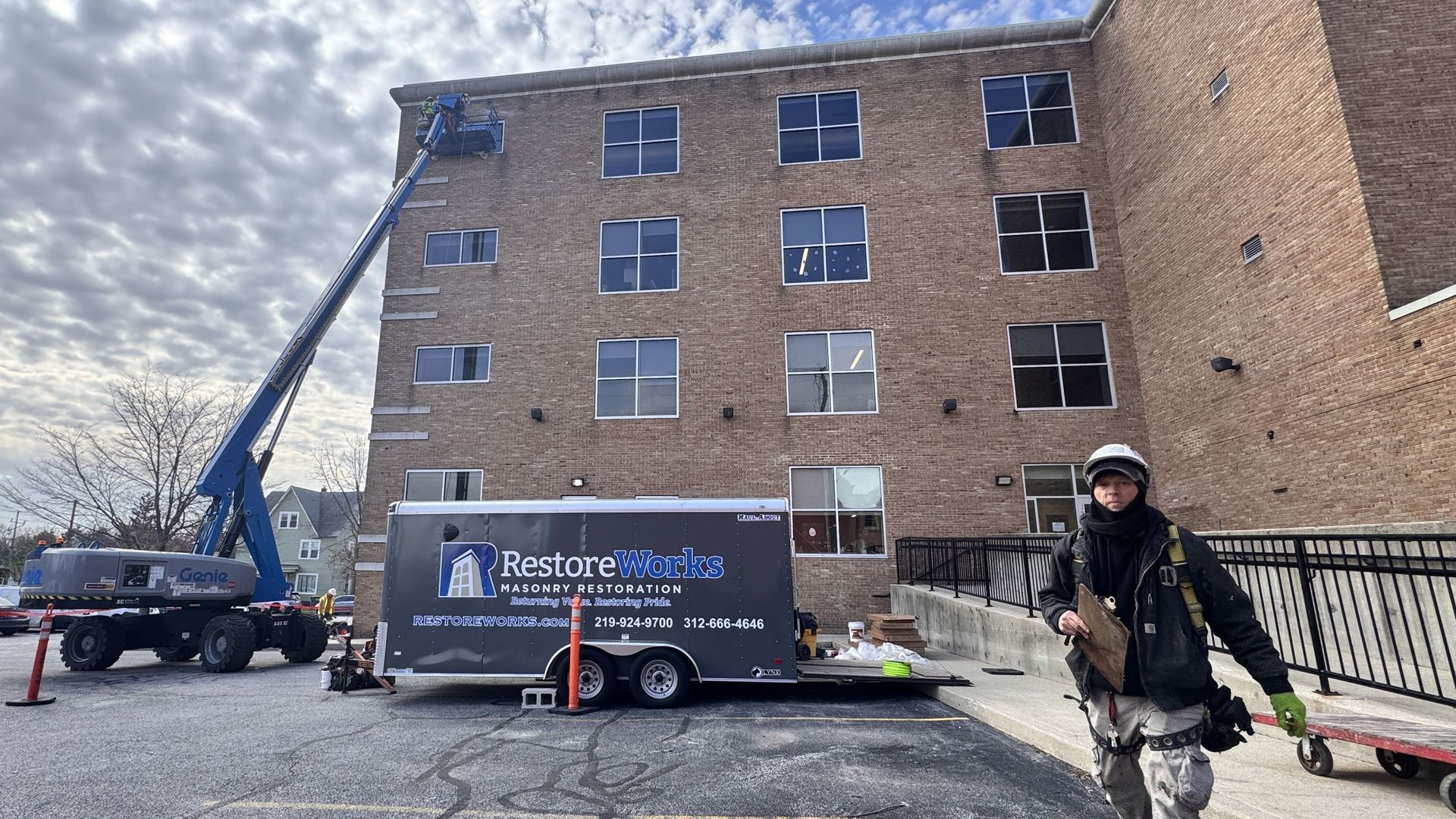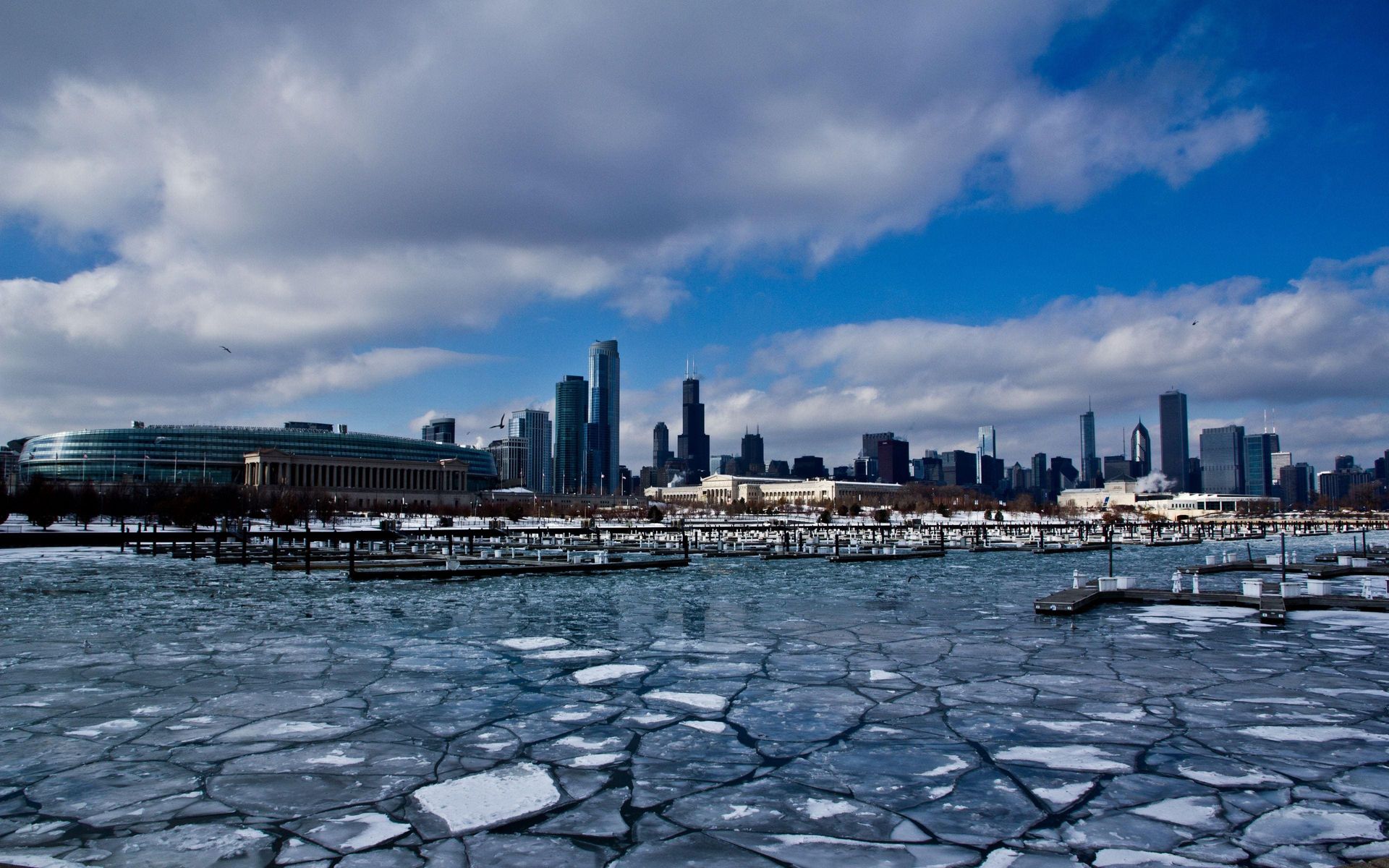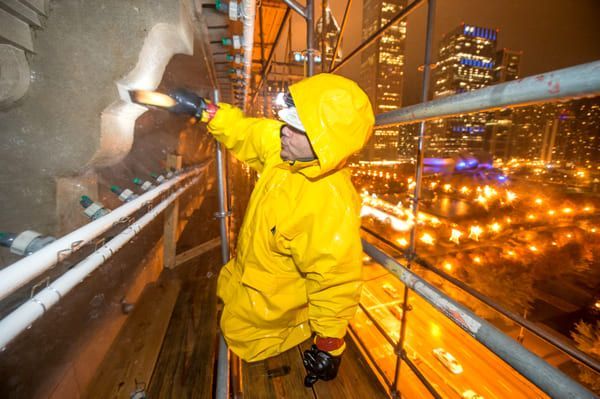The long-term performance of masonry structures depends on more than just durability. Maintenance practices, especially in Chicago’s harsh climate, must balance structural integrity with environmental sustainability. For property managers, the challenge lies in addressing masonry deterioration while also meeting green building standards and minimizing operational disruptions.
In this blog, we’ll explore sustainable masonry restoration practices that reduce environmental impact and extend the life of your building.
Why Sustainability Should Drive Masonry Restoration
Masonry structures, particularly those exposed to the Midwest’s weather extremes, experience gradual wear due to factors like moisture infiltration, freeze-thaw cycles, and pollutants. While traditional restoration methods are effective, they often rely on energy-intensive materials and generate significant waste. A sustainable approach to masonry restoration offers:
- Reduced environmental impact from sourcing and production of materials.
- Prolonged lifespan of existing building components, minimizing landfill waste.
- Compliance with LEED or other green building certifications.
Adopting sustainable techniques not only benefits the environment but also enhances long-term cost efficiency by reducing the frequency of future repairs.

Sustainable Techniques in Masonry Restoration
1. Eco-Friendly Cleaning Methods
Removing dirt, pollutants, and biological growth from masonry surfaces is a necessary step in restoration. However, traditional cleaning techniques often rely on harsh chemicals or high-pressure washing, which can damage masonry and harm the environment. Sustainable alternatives include:
- Low-impact chemical cleaners that are biodegradable and free of harmful solvents.
- Laser cleaning technology, which precisely removes surface contaminants without water or chemicals.
During a previous project at Willoughby Tower in Chicago, RestoreWorks installed hundreds of low-pressure jets to mist water onto the building, along with gentle hand scrubbing with soft brushes to ensure the process restored the building while protecting it.
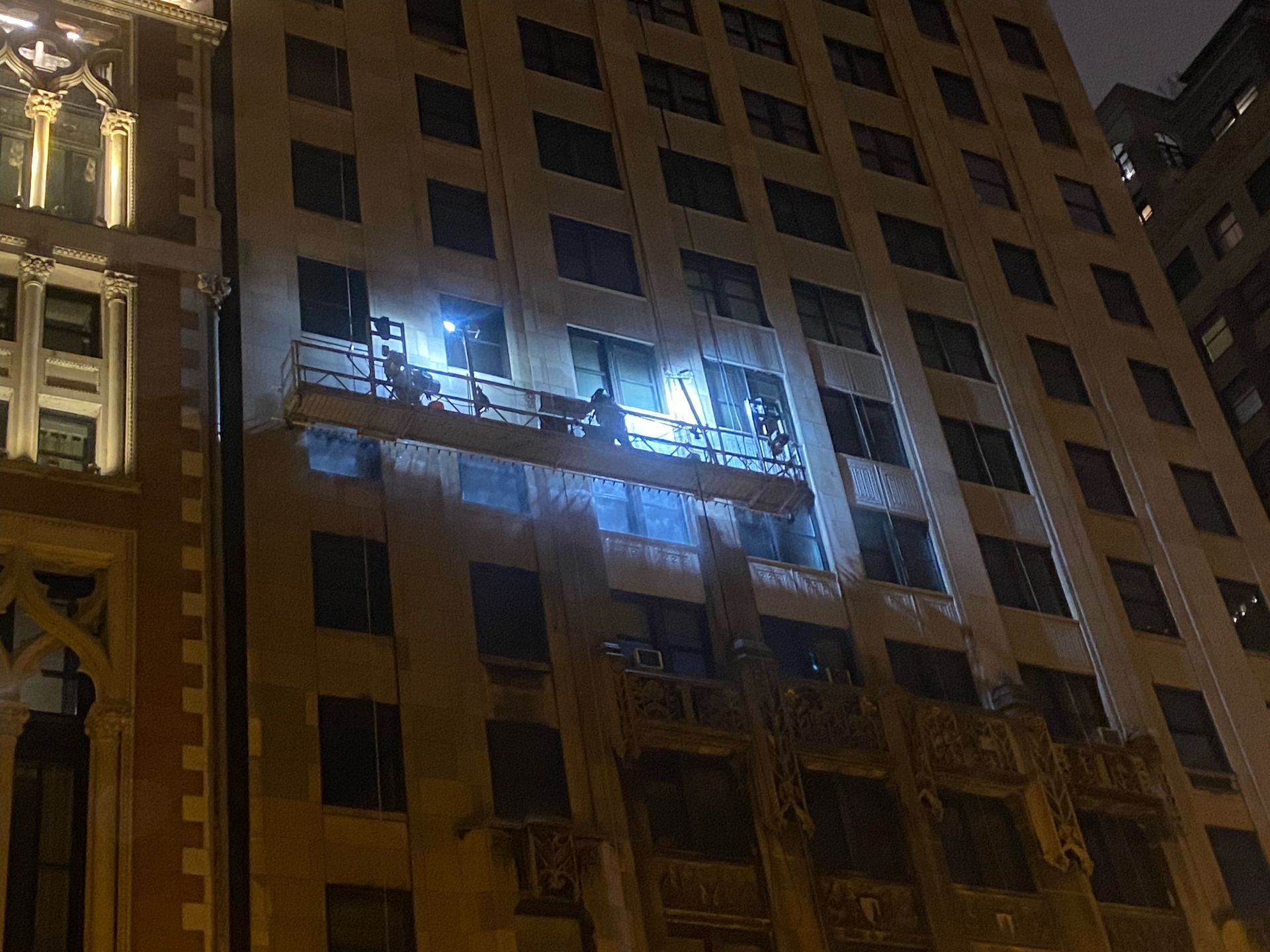
2. Repointing with Lime Mortar
Repointing, the process of replacing deteriorated mortar, plays a critical role in maintaining the structural stability of brick and stone facades. Sustainable repointing involves the use of lime-based mortar instead of Portland cement, offering several advantages:
- Lower energy consumption during production.
- Enhanced breathability, which reduces moisture entrapment and prevents freeze-thaw damage.
- Better compatibility with historic masonry, preserving the building’s character and integrity.
This technique is ideal for restoring older masonry structures in Chicago, where preserving historical details is often a priority.

3. Incorporating Recycled and Local Materials
Restoration projects can significantly reduce their carbon footprint by using recycled or locally sourced materials. Examples include:
- Salvaged bricks or stones for repairs, especially in historical buildings.
- Recycled aggregates for concrete repairs, which reduce reliance on virgin materials.
- Locally produced materials to minimize emissions from transportation.
By prioritizing these materials, restoration projects become more environmentally friendly without compromising quality or appearance.
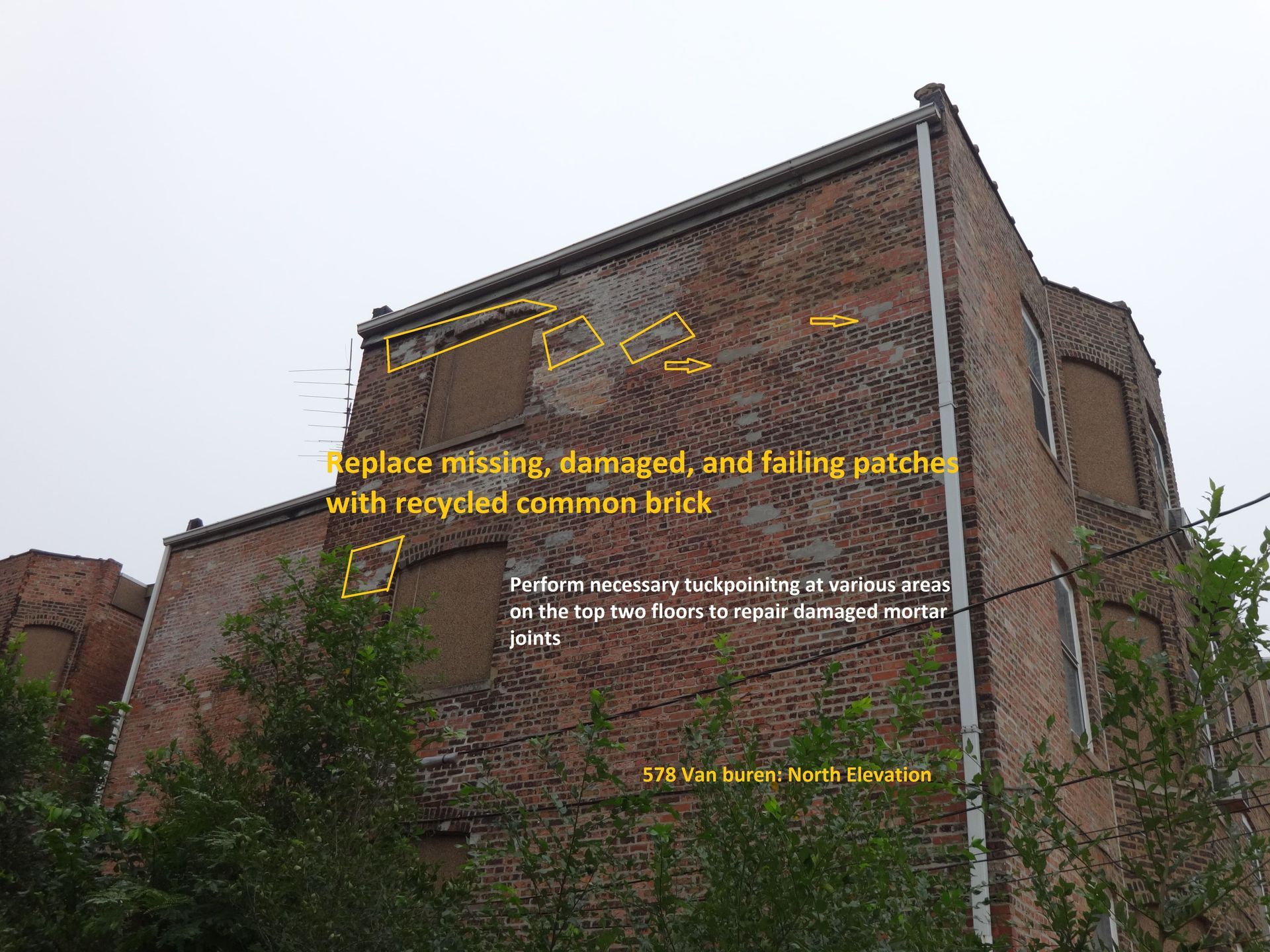
4. Advanced Masonry Coatings and Sealants
Moisture infiltration is one of the leading causes of masonry damage in Chicago’s climate, particularly during freeze-thaw cycles. Sustainable sealants and coatings can protect masonry without the harmful side effects of traditional products. Modern solutions include:
- Breathable coatings that allow moisture vapor to escape while preventing liquid water from entering.
- Low-VOC sealants, which are safer for workers and building occupants while still providing long-lasting protection.
These products are particularly effective for balconies, facades, and parapets, where exposure to the elements is highest.

5. Preventative Maintenance for Longevity
Sustainable restoration is not just about repairing damage, it’s about prevention. A well-maintained building requires fewer invasive repairs, reducing waste and cost over time. Key preventative measures include:
- Regular inspections to identify early signs of cracking, spalling, or water infiltration.
- Proactive sealant replacement to prevent water damage to facades and structural components.
- Cleaning and repointing to address wear before it escalates into significant deterioration.
Masonry Magazine has seen a trend in commercial properties investing in proactive masonry services in attempt to reduce costs, as repairs could be significantly more expensive if addressed too late.
A Smarter Approach to Masonry Restoration
The masonry restoration industry is evolving, with sustainability taking center stage. Techniques like lime mortar repointing, eco-friendly cleaning, and the use of recycled materials not only preserve the integrity of masonry structures but also contribute to broader environmental goals.
At RestoreWorks, we’re committed to delivering innovative yet effective solutions. From balcony repairs to large-scale facade restoration, we specialize in addressing the unique challenges of Chicago’s commercial properties.
Let’s work together to protect and preserve your building for future generations. Contact RestoreWorks today to schedule a consultation and explore how sustainable restoration techniques can enhance your property.

